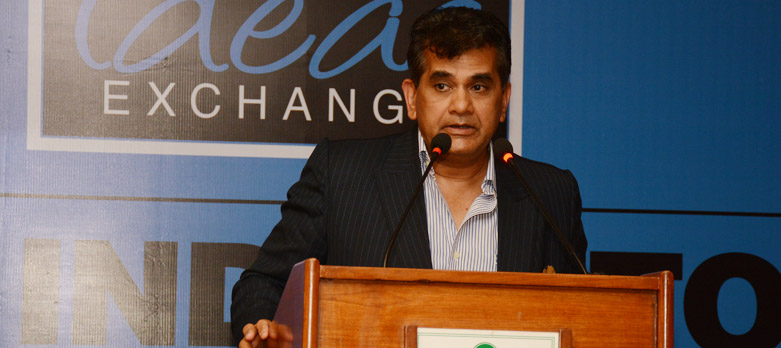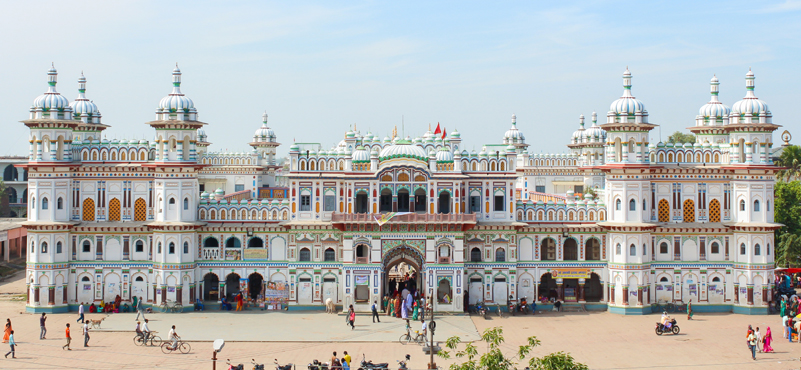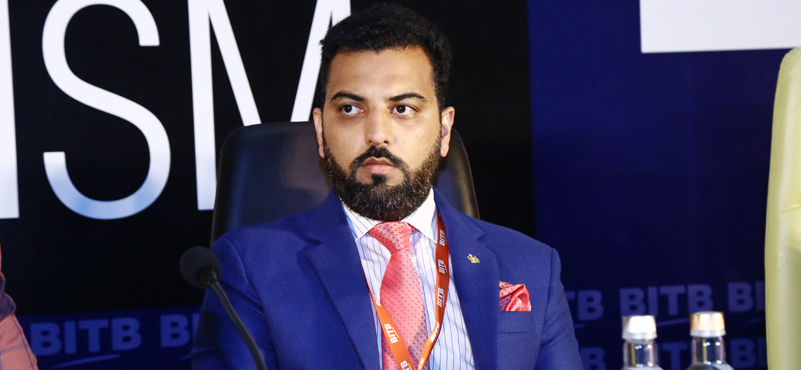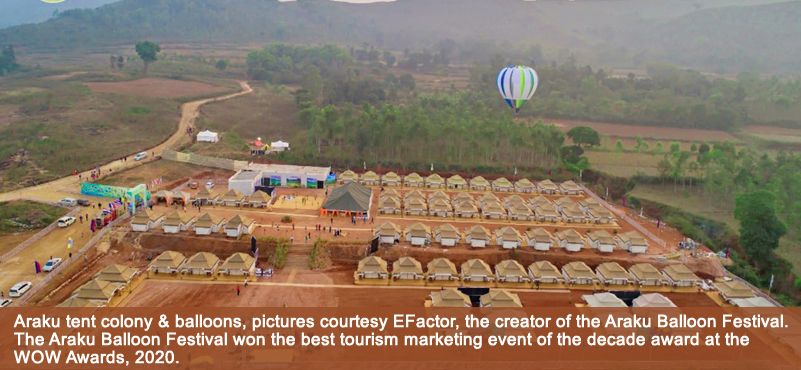According to Amitabh Kant, Secretary, DIPP, tourism is an integral pillar of the ambitious Make in India programme and in government schemes of things, it has to eventually emerge as a leading growth engine of the national economy. We bring you the speech delivered by Amitabh Kant at the recently held Indian Tourism 2.0 conclave at India Habitat Center, Delhi…
The key challenge for India today is to grow consistently at a high 9-10 percent trajectory for the next three decades to create jobs for a young population. India is presently passing through a window of demographic transition which rarely happens in history. The key socio- economic transformation happening across the world is that population in Europe and the USA is getting older. 8000 Americans and 8500 Germans are retiring every day. As against this, population in India will keep on getting younger till 2032. It has very rarely happened in history that when you have light dependency burdens, the country does not progress. India has grown at high rates for a short period of four-five years in the past but now it needs to sustain that for the next three decades. And if India can do it, then economy grows and so does the size of the business cake and tourism. Tourism afterall is a sub-set of the economy. So what all of us needs to do is to make India grow which in turn would ensure that everything else happens.
I strongly feel that these are very exciting days – there is a lot of energy, vibrancy and dynamism and this trend is reflected in several things. And if we intend to bring these factors to the tourism sector as well, there are a host of initiatives we should be setting afoot particularly in terms of creating a better eco-system for businesses. First and foremost, India must become an extremely easy and simple place to do business. India has made itself a very complicated and complex business turf and until, it does not scrap unnecessary procedures, huge amount of paper works, rules and regulations, acts, etc. which have been accumulated for last 60 years, it will be very difficult to grow at a rapid pace. Over the years, we have built up a legacy of control and it needs to be done away urgently and India must become an easy and simple place to create wealth. The second thing which we need to understand is that we are now living in a globalised world. The times are quite different from what it was when I was working in the tourism space. And India can’t grow until you become an integral part of the globalised world. You have to be part of the global supply chain. What is happening across the world, if you look at trans-Atlantic treaty, trans- Pacific treaty, ASEAN, etc the formidable regional blocks are taking shape. The world is witnessing the demise of the WTO with the emergence of regional blocks which are now facilitating trade and investments. And unless India becomes part of these trading blocks, we will lose out in a major way. We have to show some aggression on this front. And, therefore, India needs to open its markets more. In the last eight-nine months we have built some momentum with a lot of liberal moves in terms of facilitating more FDI in defence, railways, construction, medical devises, etc. Other than multi-brand retail, India has become the most open economy in the world today. And the positive impact of these moves is already visible. In the recent months, while the global FDI inflow has fallen by 16 percent, the FDI inflow in India has grown by a whopping 48 percent after the launch of “Make in India” initiative.
Another major positive factor in favour of India is: there is a huge amount of energy around India’s young people and this is reflected in the fact that there is a large number of innovations engineered by the Indian youth and there is a lot of start-up enterprises. India has become the third biggest country for the start-ups. Students from IITs and IIMs are straight away moving to become entrepreneurs. This youthful entrepreneurial zeal is well reflected in companies Flipkart and Snapdeal which are not only taking on the Amazons of the world but actually beating them in the domestic market. And this trend will further consolidate.
The fourth point I want to make is: India is actually becoming a great place for research & development (R & D). In last four-five years, about 10,000 MNCs have moved out their R & D units from their headquarters and relocated them in places like Hyderabad and Bangalore. This is a trend which people have not discerned but these MNCs have created about 5,00,000 jobs in India just for R & D. This again proves that India is fast becoming an exciting place for a vast range of activities.
We clearly want to accelerate this momentum and Make in India programme is meant to do that. It recognises that we need to excel in several areas. India’s growth has primarily been backed by the services sector with its hefty share of 60 percent in our GDP. In fact, many of us have started believing that India will bypass the manufacturing boom itself. But in a population of 1.2 billion if you by pass it, there is going to be huge perils of premature de-industrialisation or non- industrialisation. And this will play out in the long-term when you will have no jobs for the young people. And, therefore, India must also not only be the back office but also factory of the world as other manufacturing powerhouses are becoming more expensive. China is adding 12 percent wage increase every year. It will, therefore, going to become more expensive for manufacturing and India must seize this opportunity. To my mind, this is a make or mar situation for India. The next five years would be most critical in the history of this nation – if India does not create a formidable manufacturing base in the next five years, it may never be able to do so.
Tourism with its possible role of a significant economic multiplier becomes very critical since India now has to grow at rapid rates and create job. It will not only be one of key sectors to create jobs but will also have huge impact across several other sectors. There is no doubt that it’s multiplier effect is most immense in the list of 25 sectors which have been selected for Make in India programme. But for tourism to be pushed to the next level, India needs to do several things. One key initiative which has been undertaken in the recent past is opening up of visa regime. This a critical step because we must understand that India is a long-haul destination where 97.2 percent of traffic comes via airways. We are not like many other countries in the world which survive and flourish on the basis of regional tourism. For people to come to India, they plan out in advance, a trend which is uniform for all South Asian countries. We are a primarily long-haul destination for which visa is a critical factor. And that has been unleashed now. If you are going to provide e-TV to 140-150 countries, you have crossed a critical barrier.
I also strongly believe that we need to consistently open our skies. Unless India opens its skies with vigour, energy and dynamism, it will be very difficult for India to succeed in the world of tourism. So the good thing is there would be no more waiting outside Indian embassies with liberal visa policy, it should also be supplemented with more flights to India. Let the airlines compete, those who don’t will go bust. But allow more international carriers. There is no such thing as a national carrier in a globalised world. The multiplier effect of that will be enormous in terms of business and in terms of travel and tourism.
This is also a point for us to indulge in some serious introspection: after so much of consistent funding for infrastructure, why India has not been able to create a singular outstanding destination or circuit? We have pumped in money in all these places. We have funded a number of outlandish proposal for infrastructure and if nothing is coming out of them, they should be scrapped. We just need to focus on six-seven outstanding circuits, five outstanding destinations and take them to the world class level. When I had joined tourism, the outlay to the ministry was just Rs 100 crore. We have now taken it to Rs 1300-1400 crore level. Why has India with so much of pumping of money for infrastructure to the states not succeeded in creating world class infrastructure? We must bring a new focus to it.
I also believe that the world has swiftly changed since my times in the tourism space. It has moved from printing, electronic to digital platforms and we now exist in a highly sophisticated digital world. There is no need for India tourism to have a baggage of whole army of tourism officers in so many overseas offices. Such a provision had validity in 50’s, 60’s or 70’s but not in 2015. It’s a digital world wherein the world survives and grows on twitters, facebooks, and other social media platforms. And you need to drive the entire marketing exercise from here making the most of the digital media.
Another critical point is: product development and experience to the customers is not a government’s creation. The government must keep itself at an arm’s length. Experiences are created by the private sector and it is their responsibility. And, therefore, to my mind the government should singularly focus itself on just a few destinations and just a few circuits. It should rather be focusing on world class marketing through the digital medium. It must keep itself out and allow the private sector to create world class experiences.
There is another important imperative. If tourism has to succeed in India, this is an age wherein we will need to create huge amount of skills in the marketplace. India today needs to create a workforce 78 percent of which should be skilled. We just need 22 percent managers. But we are actually doing the reverse – creating 67 percent managers and just 33 percent skilled force. So the entire cycle has to be reverse to strike the right equations in the market. And, therefore, your IIHMs, and your institutes of hospitality management must go through a radical restructuring to create skilled workforce.
The travel and tourism patterns in the world is changing very fast. 90 percent of Americans and Europeans have travelled abroad. But the Chinese, the Koreans and the Indians- only 5 percent of them have travelled abroad. And they will be travellers of tomorrow. The world of tourism has to cater to travellers from these countries who are going to transform the tourism equations in the future. And, therefore, Indian education and Indian Hospitality Management Institutes must cater to the new emerging world of travel and tourism.
To my mind, travel and tourism is one of the most exciting and fascinating subjects to deal with. There are several things which we can do. According to me, a destination or a product never changes its brandline. It always evolves, it always initiates innovative things. In that context, what you need to do is to take Incredible India to another level, another dimension. That requires a huge amount of creativity and the Ministry of Tourism should work with some of the most creative minds in the world. I also feel that tourism branding and marketing should move out of the government. There must be an agency like Tourism Authority of India driven by the private sector with the government playing the role of a facilitator. But in India, unfortunately the private tourism sector does not put its money for marketing and promotion. They must change it now by creating some kind of pool. A lot of work needs to be done in the area of public relations too. The government is not equipped for all these. Therefore, I am very glad that the new policy talks about a new tourism authority. That must be the leading authority for branding, marketing and promotion.
I have no doubt in my mind that tourism can be the biggest driver of growth as well as employment creation. It can be the biggest integrator of Make in India initiative. But you need to do radical things, key things and become the biggest agents of change.




































